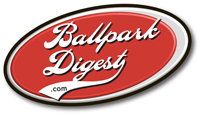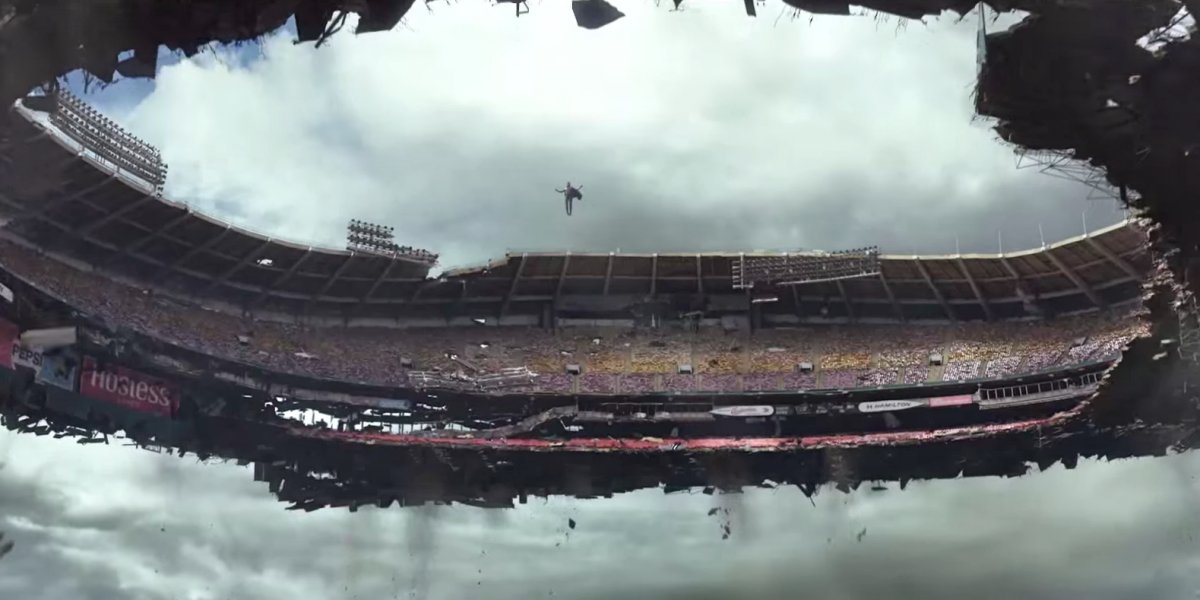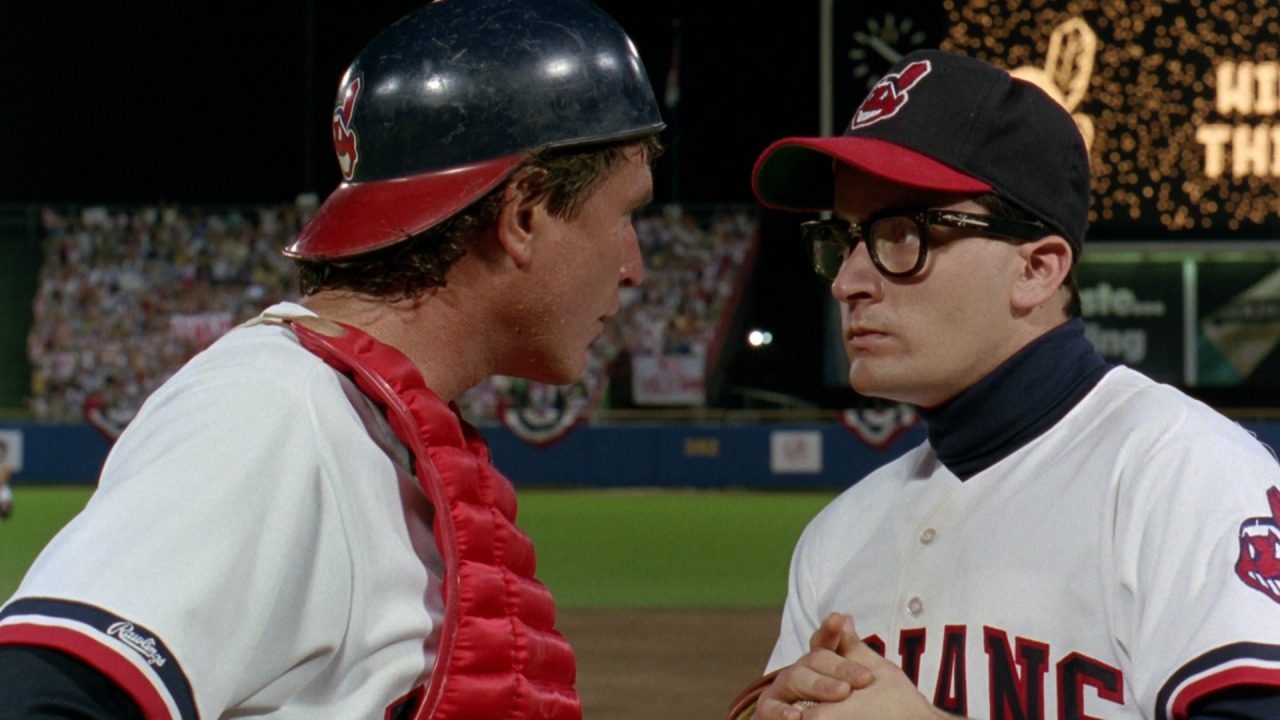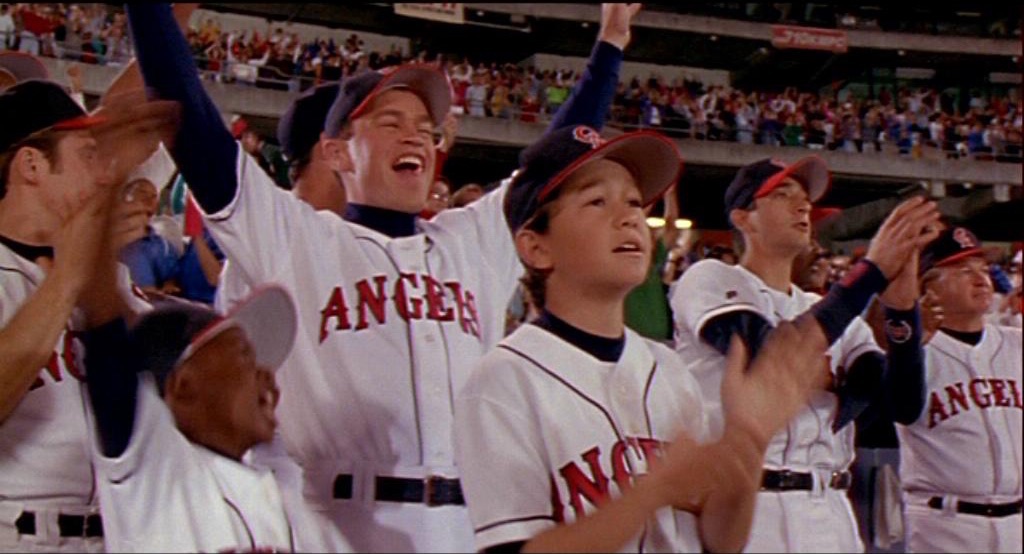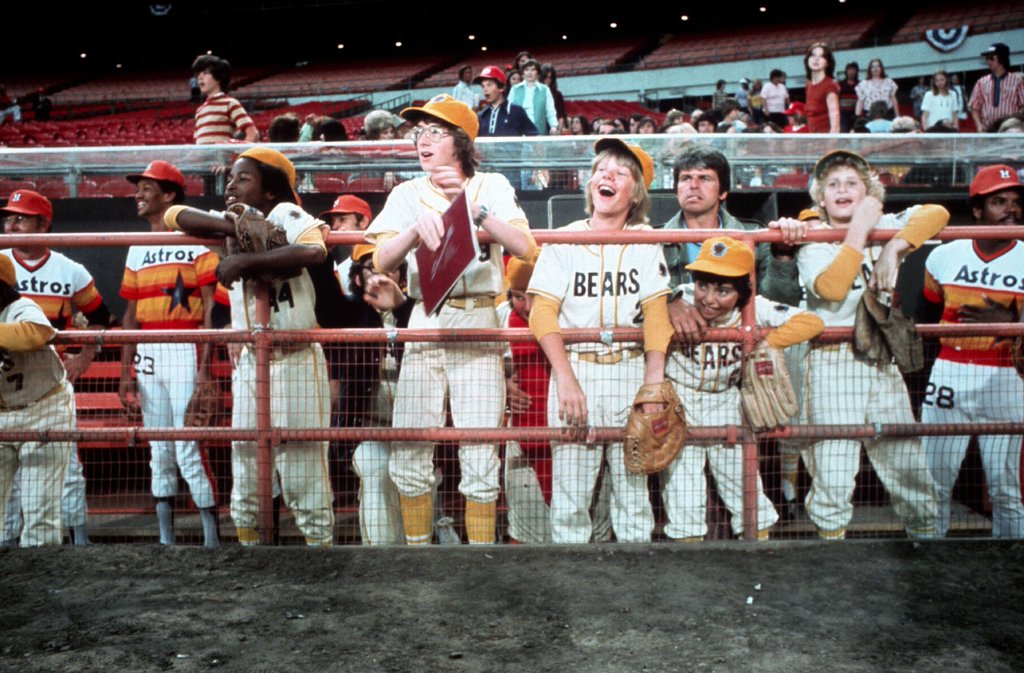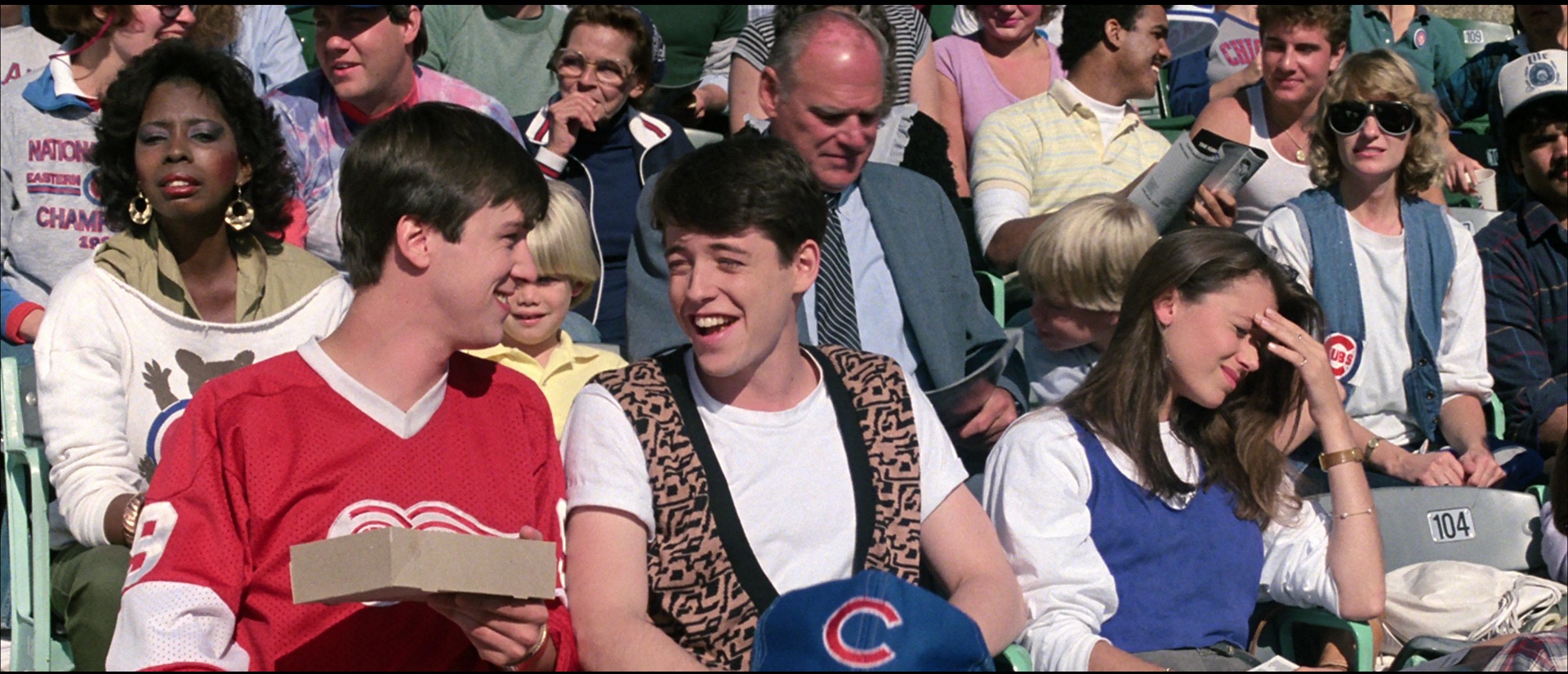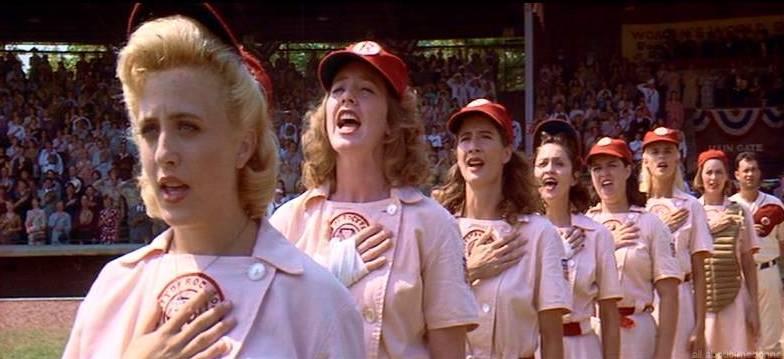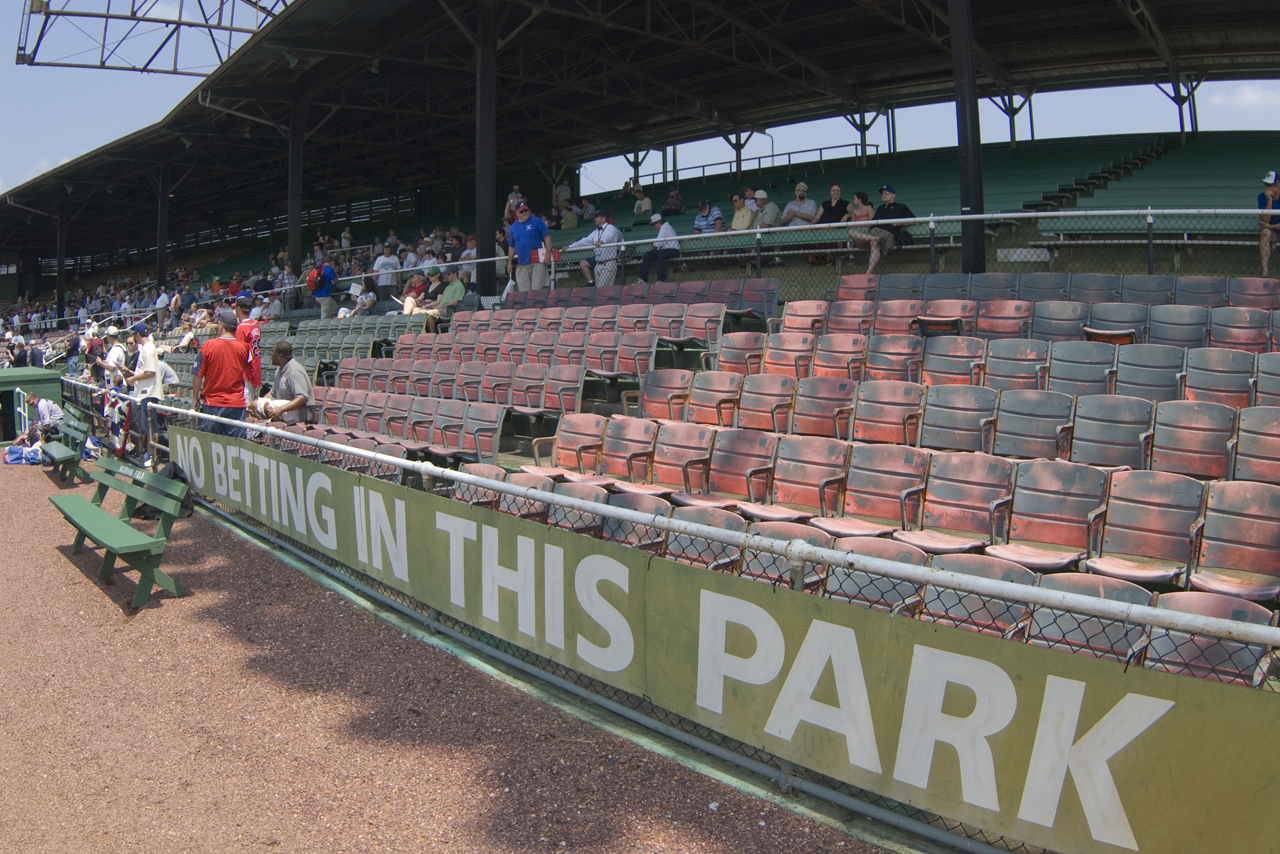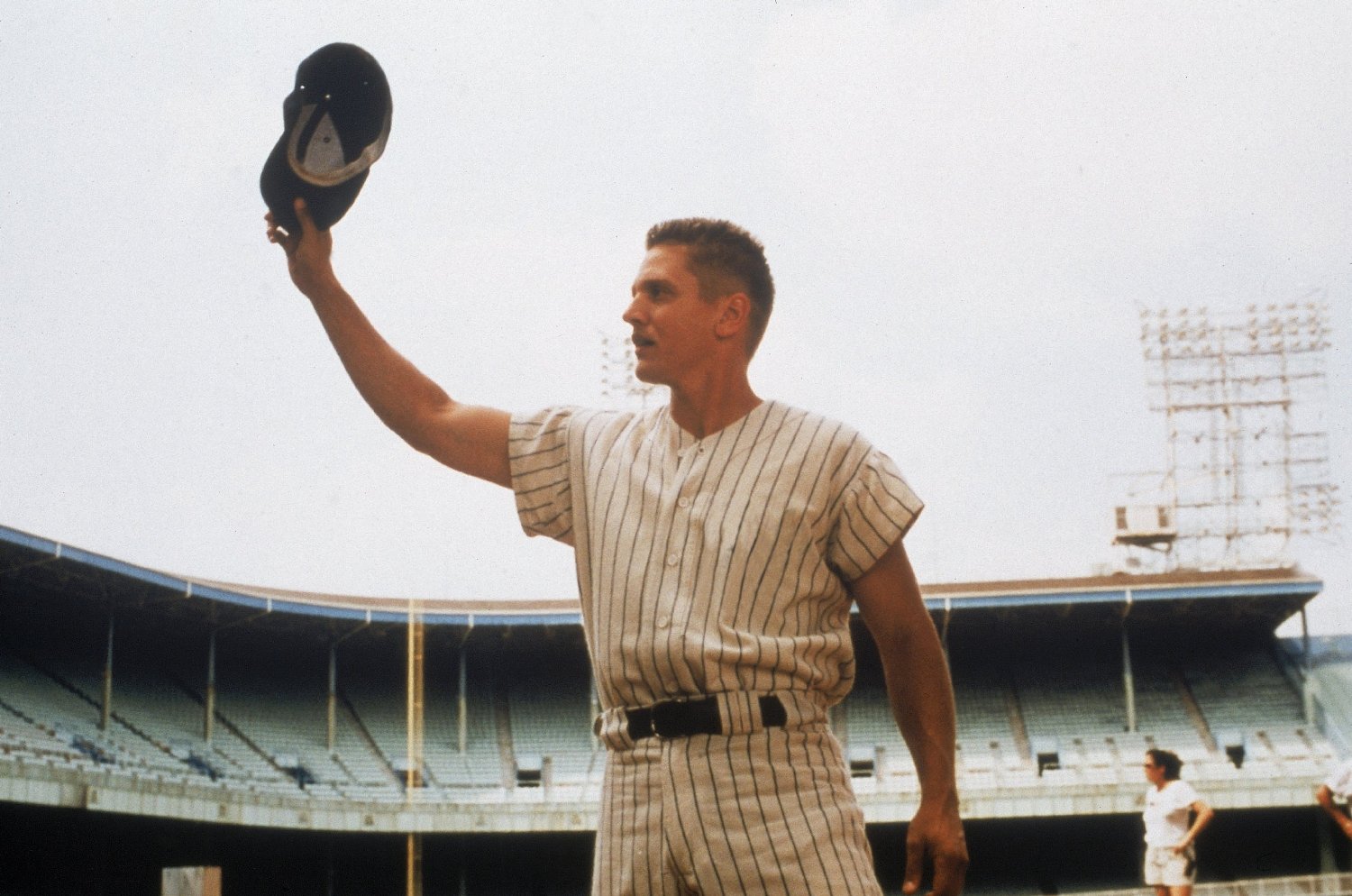Pitchers and catchers are reporting, and spring is dawning soon. With temperatures still around freezing in the north, we’re catching a few movies before Grapefruit League and Cactus League action gets underway. Here are our picks for the ten best performances by Major and Minor League Baseball ballparks on the silver screen.
10. RFK Stadium, X-Men: Days of Future Past. Washington, D.C.’s RFK Stadium, former home of the Washington Senators and Redskins, was famed for rumbling and quaking at its foundation when the hometown fans started rocking. In 2014’s X-Men: Days of Future Past, Michael Fassbender’s Magneto tore RFK off of the ground, levitating the entire facility. The field was being prepared for baseball at the time, with a member of the grounds crew chalking the line. But that couldn’t be. The scene was set in 1973, two years after the Washington Senators relocated to Texas. There would be no baseball team in the nation’s capital until the 2005 arrival of the Nationals from Montreal. In a movie based around time travel, mutants and an explanation for John F. Kennedy’s assassination, this was truly impossible. With a nod to more pure CGI, note 1969 Shea Stadium’s pivotal role in Men in Black 3. Shea itself had briefly appeared in the first Men in Black.
9. Milwaukee County Stadium, Major League; Oriole Park at Camden Yards, Major League II. The hapless Cleveland Indians were the stars of the Major League romps, but the Forest City didn’t house its own team in either film. The late County Stadium, home of the Brewers, hosted Jake Taylor, Willie Mays Hayes and “Wild Thing” Ricky Vaughn in 1989’s original, as the Tribe won the American League East. Five years later, Oriole Park at Camden Yards stood in for “Cleveland Stadium,” and the Indians won the American League pennant over Jack Parkman and the Chicago White Sox. In 1995, only a year later, the nonfiction and no-longer-hapless Cleveland Indians — playing in front of sold-out crowds at Jacobs Field — also won the American League Championship Series. Bang that drum, John Adams.
8. Oakland-Alameda County Coliseum, Angels in the Outfield. Hollywood superhero movies, excepting Deadpool, have been accused recently of trending toward dark and gritty. That described the Coliseum’s bare, dimly-lit, cavernous performance in 2011’s Moneyball, but it was a far cry from the bright 1994 remake of Angels in the Outfield. Pre-teen Joseph Gordon-Levitt co-starred, with a lineup of angels led by Christopher Lloyd (“Al” for his American League umpire baseball cap) uplifting the squad to the American League West division title. Angels Stadium is the host park in name only; California does all of its winning down by the Bay. Special mention goes to singles machine Carney Lansford, playing against type as the feared slugger on the nemesis White Sox. The original Angels in the Outfield was turned out in 1954, starring Forbes Field and the Pittsburgh Pirates.
7. Astrodome, Bad News Bears: Breaking Training. From a mostly forgettable 1977 sequel emerged the rallying cry of the 2002 MLB All-Star Game. There they were, the Bad News Bears, now managed by William Devane’s Mike Leak, on the field of the Houston Astrodome opposite the Houston Toros. Two innings in, with the Toros leading, the umpires called the game due to time deadline. After all, the actual Astros (Cesar Cedeno, Enos Cabell, Bob Watson, Ken Borsch, J.R. Richard, Roger Metzger and manager Bill Virdon, clad in their tequila sunrise uniforms) were arriving in the dugout for their own game. “Let them play!” chanted the crowd, spurred on by the Astros, Leak and the Bears. “Let them play! Let them play!” The umpires yielded, the Toros and Bears played onward, and the boys in the Chico’s Bail Bonds yellow and white jerseys came away with a stirring win on the AstroTurf, punching a ticket to play in Japan… in the next movie.
6 (t). Wrigley Field, Chicago, Rookie of the Year and Ferris Bueller’s Day Off. Wrigley Field first deserves a mention for its appearance in 1986’s Ferris Bueller’s Day Off. Baseball Prospectus’s Larry Granillo gained a measure of fame by putting together the clues picked up from the Cubs game shown to prove Ferris’s actual day off was on June 5, 1985. 1993’s Rookie of the Year did not worry about such background facts. Thomas Nicholas’s 12-year-old Henry Rowengartner falls and breaks his arm while playing ball, resulting in a recovery that gives him the ability to throw with Major League plus velocity. The impetus for his discovery and signing comes from that old Wrigley Field standby, throwing back the opposition’s home run, which Henry hums in from the bleachers to home plate. Given an MLB contract by the opportunistic Cubbies — what do they have to lose? — he strikes out Bobby Bonilla, Pedro Guerrero and an overmatched Barry Bonds. A softball-style eephus and a Cubs World Championship close out a glorious North Side fantasy.
6 (t). Wrigley Field, Los Angeles, Damn Yankees and more. The second Wrigley Field opened in 1925, though it was the first to be named after William Wrigley, Jr. (Chicago’s friendly confines received its name change from Cubs Park in late 1926.) Wrigley’s Tinseltown location opened the door for numerous starring opportunities: Acting as Griffith Stadium, it was the host stadium for the 1958 musical Damn Yankees; it hosted the original Kid From Left Field in 1953, remade as a TV movie with Gary Coleman two decades later; it dropped by the Twilight Zone to host a 1960 episode about an android baseball player, “The Mighty Casey”; and, most famously, it was the setting for 1960’s Home Run Derby television series, hosted by Mark Scott. Scott’s midseason death that summer caused the show to be canceled. It has lived onward in syndication, offering the treat of watching Willie Mays, Mickey Mantle, Harmon Killebrew (both shown above), Hank Aaron and Ernie Banks, among others, in the slugging prime of their careers.
5. Dodger Stadium, The Naked Gun: From the Files of Police Squad. Give Dodger Stadium credit for serving in the best scene of 2006’s Superman Returns, providing a heck of an arena as the title character saves a plane containing Lois Lane from a fiery crash. But that was only a cameo for Chavez Ravine. Far greater screen time was granted during 1988’s The Naked Gun, with the park dressed up as Angel Stadium. Ricardo Montalban’s villainous Vincent Ludwig prepares to activate his secret sleeper assassin in a plot to kill Queen Elizabeth II during an Angels/Mariners game. Enter Leslie Nielsen’s deadpan Lieutenant Frank Drebin, undercover as tenor Enrico Palazzo and then home plate umpire, frisking the ballplayers, shrugging at a host of ball-scuffing contraband, playing to the crowd, and flummoxing Major Leaguer Jay Johnstone and MLB arbiters Ken Kaiser, Doug Harvey, Joe West, Hank Robinson and Ron Luciano. The assassin? Reggie Jackson, marching in from the outfield to pick up a gun hidden under second base.
4. Bosse Field and League Stadium, A League of Their Own. Evansville’s Bosse Field opened in 1915. Huntingburg’s League Stadium came about even earlier in 1894. Nearly a century later, the two Indiana ballparks served significant roles for 1992’s A League of Their Own, telling the story of the inaugural 1943 season for the All-American Girls Professional Baseball League. The older League Stadium received a special renovation just for the occasion, touching it up for its Hollywood debut. Bosse Field, meanwhile, was cast as the host park for the Racine Belles, the club playing opposite the central Rockford Peaches for the AAGPBL championship. This placed Bosse, with its bowl dimensions and deep-set dugouts, at the center of the most quotable scenes in the film. (Is there crying in baseball?) The ballpark still hosts the independent Evansville Otters; attend a game and you’ll find Racine Belles logos left over from the filming over two decades ago.
3. Modern Woodmen Park, Sugar. The Midwest League’s Quad Cities River Bandits’ ballpark opened originally in 1931 as Municipal Stadium. Renovations have since turned it into one of the top MiLB venues in the country, located with the Mississippi River and the photogenic Centennial Bridge visible beyond the right field wall. This was the home ballpark for Miguel “Sugar” Santos, hero of 2008’s Sugar, a film that serves as a testament to the challenges faced by international signees. Santos, from San Pedro de Macoris, battles emotions, confidence, loneliness, health concerns, language barriers and racism, all while playing in stadiums familiar to any Midwest League rooter. One road trip brings him to Beloit’s Pohlman Field; another stops in on Burlington’s Community Field. He is interviewed, with translator, by then-Burlington announcer Randy Wehofer, now with the Triple-A Iowa Cubs. The script is fictional, but its heart remains raw and real. Watching Sugar’s triumphs and failures upon that familiar field in Davenport, Iowa, feels like watching a documentary.
2. Rickwood Field, 42. Historic Rickwood Field of Birmingham, Alabama, was officially opened for play in 1910, hosting the Birmingham Black Barons and Birmingham Barons for decades until the introduction of the Hoover Met in 1987. The Barons still play in Rickwood for one game against a Southern League foe each year, the Rickwood Classic. So it was that the field was lively and ready to go for the film-makers of 2013’s Jackie Robinson biopic, 42. Wrote Al.com’s Bob Carlton on May 16, 2012, “For Tuesday’s scenes, Rickwood was trimmed in red-white-and-blue bunting… to replicate old Roosevelt Stadium in Jersey City, N.J., where Robinson traveled with the minor-league Montreal Royals on his way up to the Dodgers. Today Rickwood will double for old Forbes Field in Pittsburgh, where Robinson had a run-in with Pirates pitcher Fritz Ostermueller his rookie year.” A final touch-up to the script allowed Rickwood to play a third role: itself. Early in the movie, the venerable park hosts a Birmingham Black Barons tilt against Jackie Robinson’s Kansas City Monarchs. (Other on-field moments in the film set their stage at Chattanooga’s Engel Stadium and Macon’s Luther Williams Field.)
1. Tiger Stadium, 61*. “Yankee Stadium doesn’t look like Yankee Stadium anymore, like it did in 1961,” said director Billy Crystal to the Associated Press. “This place… has the feel, the texture of what we all knew and what we felt when we were growing up. This is baseball.” With those words, he justified Detroit’s grand ballpark playing not just itself, but pinch-hitting as the House That Ruth Built during HBO Films’ 61*, released in 2001, chronicling the chase to break Babe Ruth’s single-season home run record. (The L.A. Coliseum similarly stepped in for Fenway Park and Memorial Stadium.) Added the AP, “Tiger Stadium will undergo a few temporary modifications such as a shorter right-field fence to make it look like Yankee Stadium, production designer Rusty Smith said.” The filming occurred in 2000, the year that the Tigers moved in to their new home of Comerica Park. There was no subterfuge presented to the viewing public; Crystal made sure to note that the part of Yankee Stadium was played by Tiger Stadium during the credits.
HONORABLE MENTIONS
Readers weighed in with their own favorites movies and ballparks. Here are some of the more noteworthy Twitter responses:
.@ballparkdigest We mean, c’mon! pic.twitter.com/ZejTKnu6iE
— Citi Field (@CitiField) February 22, 2016
.@ballparkdigest published an article about the 10 best performances by ballparks in movies. Think they forgot 1: https://t.co/jRfb6ZbXtG
— Durham Bulls (@DurhamBulls) February 23, 2016
@ballparkdigest How about an honorable mention for Kenny Powers @TicketReturn Field with @Pelicanbaseball #SmallScreen — Andy Milovich (@ARMilovich) February 23, 2016
No mention of #Harrisburg Riverside Stadium for Major League 2? Travesty! Haha https://t.co/2YDHCrRC5d
— Jason Bristol (@JasonBristol) February 22, 2016
@ballparkdigest no Turner Field for Trouble With the Curve? ? — Matthew (@gingerbeard03) February 22, 2016
